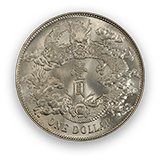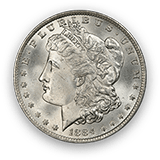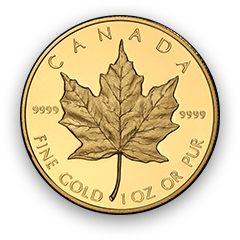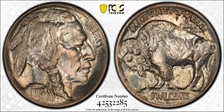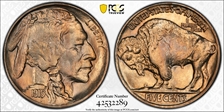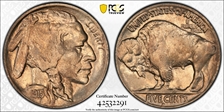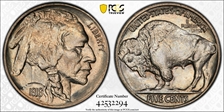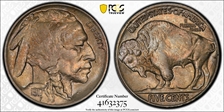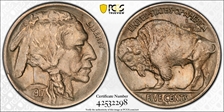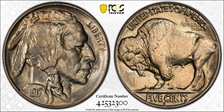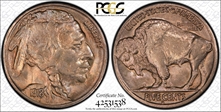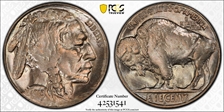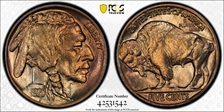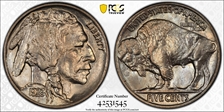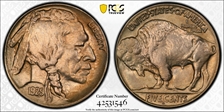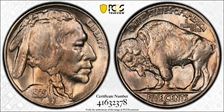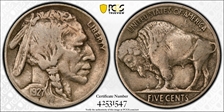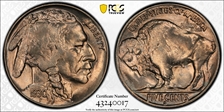The JDG Trust Collection 的钱币相册
Here is a nice example of a 1917 D Buffalo Nickel, 2 Feather Variety. The obverse die was polished to eliminate a die clash and also eliminated the smallest or third feather. On this example, the third feather is 95% eliminated and it is considered a 2 Feather Variety. This is a Regular Variety.
This 1919 S Two Feather Variety is considered a Regular Variety. This coin is at the sole top of its population. Although a small portion of the third feather shows, it is still considered a true 2 Feather Variety.
This 1921 Two Feather Buffalo Nickel is considered a Regular variety. This coin and 1921's in particular are very good examples of two Feathers as the Third Feather (Smallest Feather) is totally gone along with the upper back portion of the Indians neck. This is a result of the mint employees attempting to remove die clashes on the dies. The 1921's were polished with great enthusiasm by mint personal to the extent part of the neck disappeared.
This 1921 S Buffalo Nickel is considered a regular Two Feather Variety. The Third (Smallest) Feather is 100% effaced. This coin is an excellent example and is tied at the Top of the Population.
The 1923 Buffalo Nickel, Two Feather Regular Variety is a tough one. As shown on this example, which is the sole #1 Top Pop Specimen, a very small portion of the third feather remains. However, since this remnant is detached from the neck AND hair, it is considered a true Two Feather. I once had a 1923 Two Feather that had just about 100% of the third feather effaced but it was well worn and graded G4 as I recall. Wear could have eliminated the small feather remnant that exists on the above shown coin.
Here again we have a Regular Two Feather Variety 1925 D Buffalo Nickel with just the slight bit of the Third Feather remaining. This coin is the #1 Top Pop specimen and is considered a true Two Feather. Note that the very small remnant is completely detached from the hair and neck.
This 1928 S Buffalo Nickel is considered a Two Feather Regular Variety although a small remnant of the feather remains. This remnant is detached from the neck and hair forming an island and can be legitimately listed as a Two Feather.
